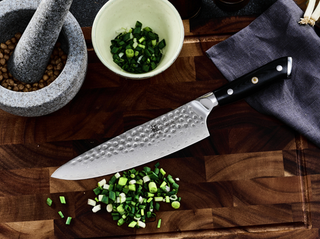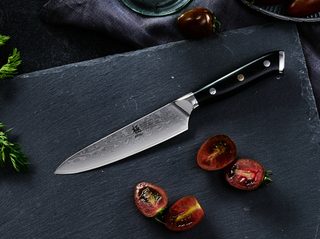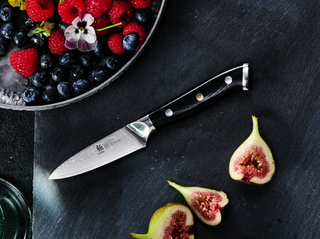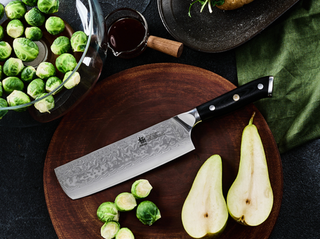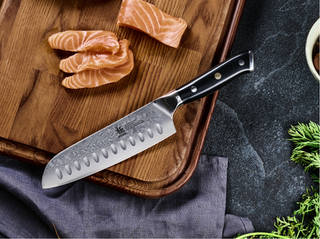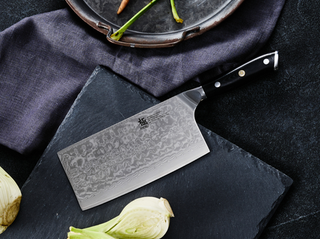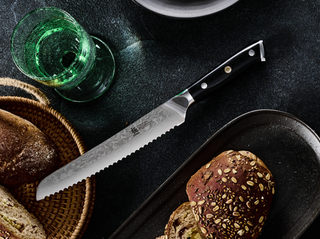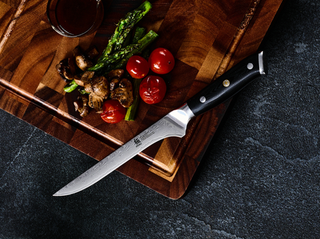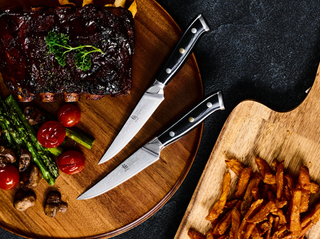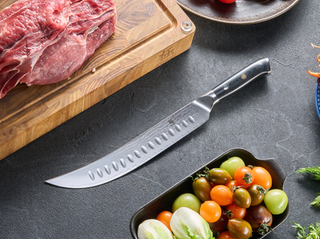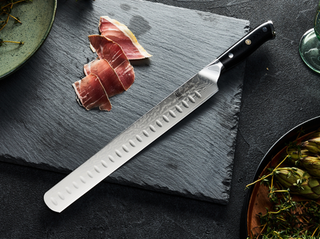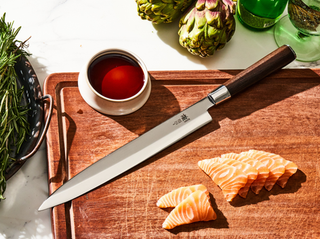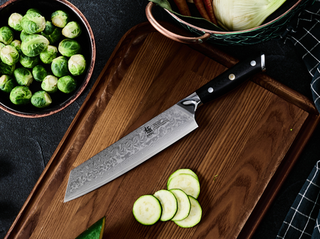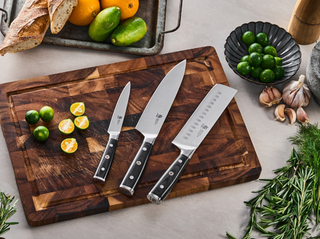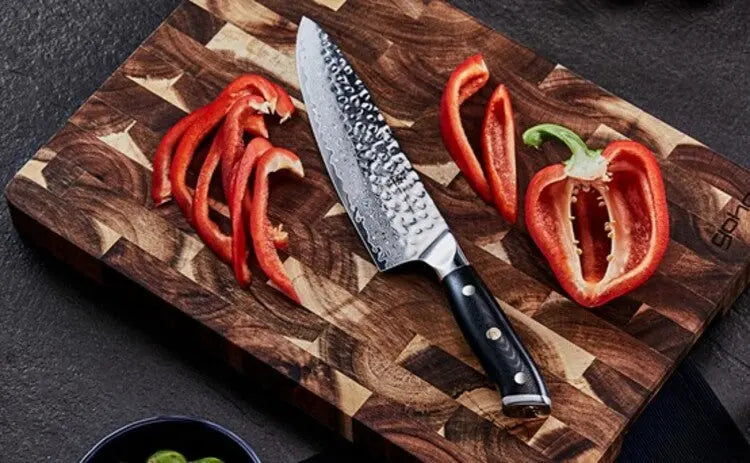You've probably seen them - those gorgeous checkerboard cutting boards that look like they belong in a professional kitchen or a home design magazine. The end grain cutting board has become something of a status symbol in modern kitchens. While they can be amazing tools when properly cared for, experienced woodworkers and chefs have revealed a more nuanced story about these beautiful but demanding wood cutting boards.
1. What Makes a Wood Cutting Board "End Grain"?

Picture a tree trunk sliced into rounds, like cookies. When you look down at one of these rounds, you're seeing the end grain - those distinctive circular growth rings and the wood fibers standing up vertically. End grain cutting boards are essentially made from many of these small wood "cookies" arranged and glued together to create that characteristic checkerboard pattern.
How End Grain Works with Knives:
-
The wood fibers stand vertically, like bundles of drinking straws
-
When a knife hits the surface, these fibers can:
-
-
Separate slightly to accept the blade
-
Spring back together afterward
-
Act like a firm brush, where bristles part and return to position
-
-
This makes end grain boards theoretically gentler on knife edges
Safety and Maintenance According to FDA:
The FDA Food Code recognizes hardwood cutting boards as safe for food preparation when:
-
Properly maintained with food-grade mineral oil
-
Kept clean and sanitized between uses
-
Free from deep cuts, scoring, or cracks
FDA guidelines specifically note that wood cutting boards are acceptable in both home and commercial kitchens when maintained properly.
The Moisture Challenge:
However, that same fiber structure that makes end grain boards supposedly gentler on knives also makes them particularly thirsty. Because these upright fibers readily absorb moisture, which can lead to:
-
Faster water absorption than traditional cutting boards
-
Greater risk of warping
-
Higher potential for cracking
-
Need for more frequent maintenance
2. The Pros: What End Grain Cutting Boards Get Right
End grain cutting boards have some genuinely impressive qualities. That vertical fiber structure helps your wood cutting board bounce back from heavy use. When you're chopping vegetables or breaking down a chicken, those wood fibers can take quite a beating without developing deep, permanent knife marks. This self-healing property means your board can stay smoother longer, assuming you treat it right.
These boards are also undeniably beautiful. Each piece of wood brings its own character to that checkerboard pattern, creating a unique piece that can become the centerpiece of your kitchen. And there's something satisfying about using a tool that's been crafted with such attention to detail.
The Wood Choice Makes All the Difference
The type of wood used makes a massive difference in how your board performs. Teak, for instance, stands out in the world of end grain boards because of its unique properties. It has what woodworkers call a "closed grain" structure – imagine wood fibers packed together so tightly that they create a naturally smooth, dense surface. This closed grain structure, combined with teak's fine texture, means your end grain board is less likely to trap food particles or absorb moisture compared to boards made from more porous woods.
If you're ready to invest in an end grain cutting board that combines the durability of teak with expert craftsmanship, the Kyoku teak end grain cutting board would be our recommendation. It is crafted to maximize the natural benefits of teak's closed grain structure while maintaining the classic beauty of end grain construction.
3. The Cons: Why Some Cooks Pass on End Grain Cutting Boards
Now for the reality check. Remember those "drinking straw" wood fibers? They're basically tiny moisture magnets. If you leave your end grain cutting board in a puddle of water for too long, those fibers will drink it up like they're at an open bar. Your beautiful wood cutting board might decide to warp or crack faster than you expect.
And here's something that might surprise you: while an end grain cutting board is often marketed as being dramatically better for your knives, experienced woodworkers and chefs have found this benefit to be somewhat overstated. Yes, the vertical grain structure is theoretically gentler on your knife edges, but in real-world use, the difference isn't always as dramatic as you might expect.
4. The Truth About End Grain Cutting Board Maintenance

Here's what it takes to keep your end grain cutting board in prime condition:
Even with teak's naturally resistant properties, you'll need to oil your board regularly - about once a month for a frequently used board.
When it comes to cleaning, less is more. A quick wipe with a damp cloth after use is usually sufficient. Despite teak's closed grain structure, you still want to avoid letting water sit on the surface. Remember those vertical wood fibers we talked about? They're still thirsty, even in naturally water-resistant woods.
Skip this maintenance, and your board might start to show its displeasure through warping, cracking, or developing a thirsty, dried-out appearance that's about as appealing as week-old bread.
5. Is an End Grain Cutting Board Right for You?
If you're someone who treats their kitchen tools with respect and doesn't mind a bit of regular maintenance, an end grain cutting board can be a rewarding investment. The combination of teak's natural stability and end grain construction creates a durable, beautiful cutting surface that can last for years. But if you're looking for a completely carefree cutting board that can handle being left in standing water or tossed in the dishwasher, you might want to consider other options.

The bottom line is that an end grain cutting board requires some extra care but can reward you with exceptional performance and longevity when properly maintained. Just make sure you're ready for the commitment before bringing one into your kitchen.
